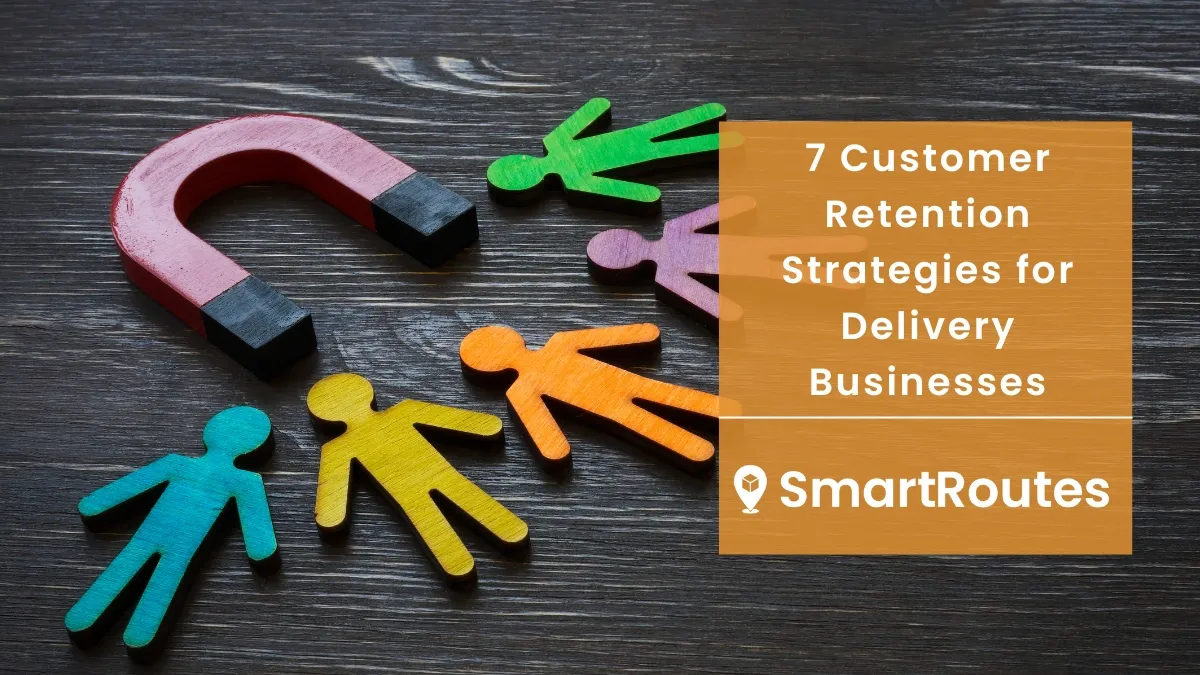8 Strategies to Manage Customer Delivery Expectations
Gone are the days of patient waiting; today’s customers are all about speed. Let's take a look at some strategies you can implement to improve your customers' delivery experience.
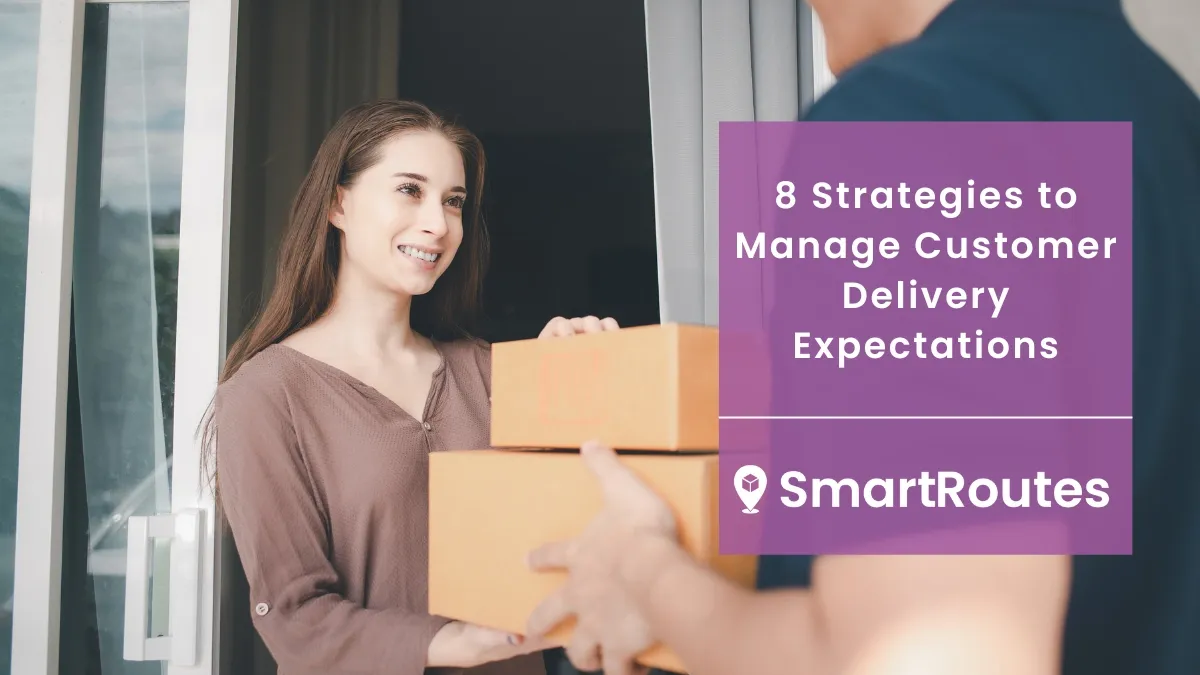
Not long ago, waiting patiently for a package was just part of the online shopping experience. Back then, days or even weeks of anticipation was the norm. Then came the likes of Amazon, shaking up the game with its Prime membership and free lightning-fast shipping. Suddenly, waiting for ages was no longer on the cards.
This move set a new pace, redefining what customers came to expect. Quick delivery wasn't just a luxury anymore; it became an everyday demand. And guess what? Now, a whopping 96% of us link "fast delivery" with getting our hands on something the same day!
Retailers have since found themselves trying to figure out how to ship things faster without breaking the bank. The pressure is on for businesses to be faster, smarter, and more innovative in how they handle deliveries. In this blog, we will take a look at exactly what customers are now expecting from their delivery experience, the challenges in meeting these expectations and how we recommend you go about managing your customers soaring expectations.
The Evolution of Customer Expectations
The Challenges in Meeting Customer Expectations
8 Strategies to Manage Customer Delivery Expectations
The Evolution of Customer Expectations
Gone are the days of patient waiting; today’s customers are all about speed. We're talking about a demand for same-day, next-day, and two-day deliveries—all without the extra fees.
But it's not just about the speed. Customers now crave control over their deliveries. They want the flexibility to tweak details, like changing delivery addresses post-purchase, opting for in-store pickups, or adding last-minute items to their orders. This shift sets a new standard: fast and flexible, no exceptions.
This transformation didn't happen overnight. What used to be an added bonus—fast deliveries—has now become the baseline. Same-day and next-day deliveries aren’t luxuries anymore; they're expected. And the ability to customize orders post-purchase? That's the new norm.
SmartRoutes Route Planning Software
Streamline your entire delivery process, all from one platform
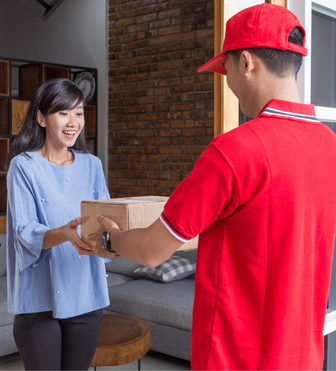
The Challenges in Meeting Customer Expectations
Brand Loyalty and Delivery Delays: Customers tend to forge strong connections with brands they trust. However, this loyalty isn't always set in stone. If a customer is eagerly anticipating the arrival of their package, but the delivery date comes and goes, and the package is nowhere in sight. This hiccup in the delivery process is enough for customers to start questioning the reliability of the brand they once trusted, even long-standing customers may become frustrated enough to cut ties with your brand, prompting customers to seek alternatives. The one-off disappointment might seem minor to a business, but to the customer, it often becomes the defining memory associated with them.
Abandoned Shopping Carts: One of the main reasons customers choose to abandon their online shopping basket is the addition of the delivery costs right at the end. It causes nearly 70% of consumers to abandon their carts — right when they are about to finalize their purchase. (Nearly half of consumers attributed abandoned carts to extra shipping fees!). This statistic speaks volumes about the significance of transparent and reasonable shipping costs in the eyes of customers.
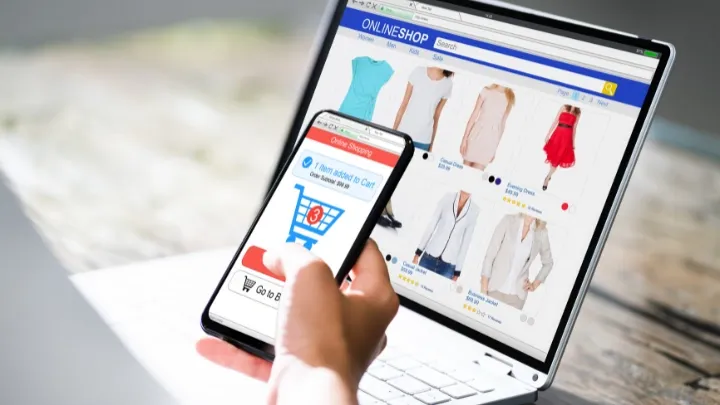
Lack of Control with 3PLs: By entrusting delivery control to a 3PL and relinquishing direct oversight, businesses inadvertently pass on the responsibility for the delivery experience. Consider this scenario: an unforeseen delivery delay arises due to external factors. Yet, despite the 3PL's involvement, customers might associate this delay with the business itself, unaware of the 3PL's role in the process. This lack of transparency blurs the lines of accountability, leaving businesses unable to proactively address or notify customers about the issue. While 3PLs undoubtedly offer expertise and efficiency, businesses must leverage the strengths of a 3PL while preserving a seamless customer experience.
External Delivery Dilemmas: Picture this: a delivery schedule meticulously planned, routes optimized, and time slots assigned for on-time deliveries. But reality often throws curveballs. Traffic jams stretch for miles and bad weather closes roads, each slowing down the whole process. These unexpected delays aren’t just minor inconveniences; they can effectively throw off the entire schedule, impacting every delivery down the line. These external factors don’t just disrupt schedules; they impact the brand's commitment to on-time deliveries. These disruptions aren't within the driver's control, yet they bear the brunt of ensuring these deliveries happen.
The Cost of Speedy Deliveries: Faster deliveries often come with added expenses—expedited shipping, increased labor costs for rush orders, and more. These costs eat into profit margins, posing a significant challenge for businesses, especially when customers expect these speedier services without shelling out extra cash. Maintaining service quality amid these demands is critical. Businesses can't afford to compromise on the quality of the delivery experience, even when pressured to expedite.
8 Strategies to Manage Customer Delivery Expectations
As we have discussed, there are several challenges presented when attempting to meet customers’ delivery expectations. We have put together 10 worthwhile strategies that can help you manage your customers expectations:
1. Improve Customer Communication
Imagine a scenario where a delivery faces an unexpected delay due to inclement weather or unforeseen traffic congestion. Instead of leaving customers in the dark, a notification informing them of the delay transforms what could be perceived as a setback into an opportunity to build trust.
A simple message explaining the situation, expressing regret for the inconvenience, and outlining steps being taken to expedite the process lends a personal touch. It shows customers that their satisfaction matters and that the business values their time and trust. It’s a good idea to use a CRM or a route planning tool with notifications built in. This way you can swiftly send emails and/or text messages to the affected customers.

2. Offer a Range of Delivery Options
Customers expect an adaptable delivery experience that suits their diverse preferences and lifestyles. Free delivery, often with a more extended delivery timeframe, is a popular choice, offering cost savings for customers who prioritize economy over urgency or specific delivery dates. On the other end of the spectrum are the expedited options—same-day, next-day, or 2-day deliveries—ideal for those willing to pay a premium for heightened control and speed.
While offering a range of delivery choices is a great way to meet customer expectations, it's crucial for businesses to strategically select options that align with their capabilities and customer demands. Choosing between these options involves assessing the cost implications. Expedited deliveries come with higher operational costs, from expedited shipping fees to the need for enhanced logistics and resources. Starting with a strategic selection of 2-3 choices enables effective planning and management. Testing the waters and analyzing customer preferences can guide the addition or removal of specific options, ensuring a balanced and profitable offering.
3. Offer Free Delivery
As mentioned earlier in this blog, unexpected costs at the checkout stage can cause consumers to abandon their carts. Offering free delivery is a great way to make your customers happy. Consider offering free delivery for spending over a certain amount of money. So instead of charging a separate delivery fee, absorb the delivery cost for high-value orders and this feels like a bonus for customers. It also nudges them towards increasing their cart value to unlock this benefit, which can lead to higher profits.
Remember, you can still offer premium or expedited delivery options at an additional cost for those who seek it. But this flexibility will definitely ensure that every customer finds a delivery option that aligns with their preferences.
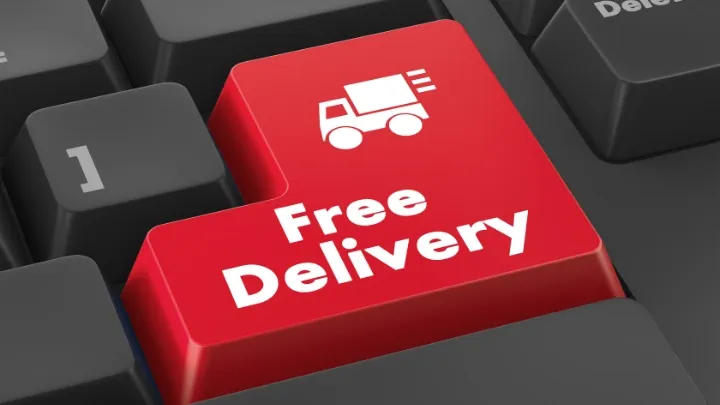
4. Delivery Incentives
Delivery incentives are a great way to manage expectations. These incentives, whether time-sensitive or tied to order volume, are like friendly nudges that encourage customers to shop smart and plan ahead.
- Time-Sensitive Incentives: You may foresee a surge in orders before Christmas. By offering a time-sensitive incentive, you can urge customers to place their orders by December 16th, for example, to guarantee delivery in time for Christmas Day. It's a win-win, by using a time sensitive incentive you ensure you’re not rushed off your feet trying to complete orders last minute and customers know they will receive their order by placing it in time.
- Volume-Based Deals: Say you're aiming for those bigger orders. Offering free delivery on orders over €60 will encourage customers to add a few more items to their cart to receive their free delivery perk.
By clearly outlining what’s doable, you’re giving your customers the heads-up. If they decide to place an order later, they know not to expect their order in time. If they choose not to meet the minimum spend threshold, they know to expect delivery fees.
5. Display Cut Off Times
It’s important when running your eCommerce shipping strategy to set realistic expectations regarding delivery times. One effective strategy is to prominently display cut-off times on your website, providing customers with a clear understanding of when they need to place their orders to guarantee specific delivery options.
By stating, for instance, "Order by 2pm for guaranteed next-day delivery," you are clearly outlining what you need to ensure they receive their order the next day. By incorporating clear and explicit cut-off times in your messaging, you're not just setting expectations, but you're also fostering a sense of trust and reliability, crucial elements in building long-lasting relationships with your customer base."
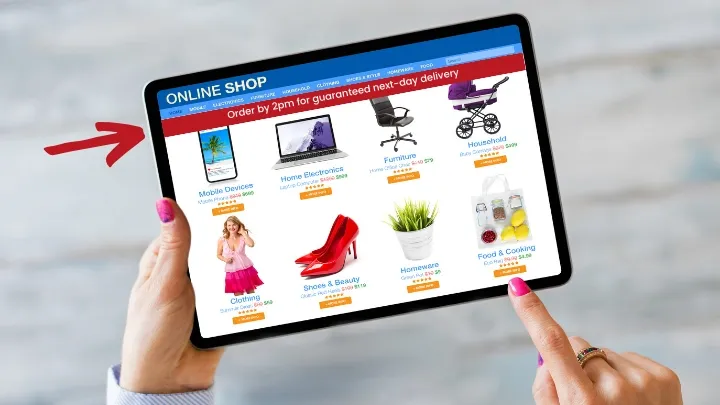
6. Sustainable Delivery
As environmental consciousness grows, customer expectations lean heavily toward eco-friendly practices in all aspects of business, including sustainable delivery services. By integrating sustainable methods, businesses can not only align with ethical values but also attract a growing demographic of environmentally conscious consumers.
Implementing route planning tools is one effective strategy. These tools analyze and optimize delivery routes, minimizing fuel consumption and emissions. They ensure efficient navigation, reducing unnecessary mileage and enhancing overall delivery speed while conserving resources. Transitioning to electric vehicles substantially decreases carbon emissions, offering a cleaner and more environmentally friendly alternative to traditional fuel-powered vehicles. Moreover, adapting the vehicle type to suit the delivery area is crucial.
7. Provide Accurate ETAs
By providing accurate ETAs, businesses offer customers a clear window into when their packages will arrive, significantly reducing uncertainty and frustration. Route planning software plays a crucial role in achieving these accurate ETAs. This technology serves as a dynamic tool that optimizes delivery routes based on various factors such as traffic conditions, distance, and even weather forecasts. By utilizing this software, companies can accurately anticipate when they will reach their customers’ door.
When notifying customers of the ETA, you can also choose to add a live tracking link. With this link, customers gain visibility into the exact location of their package at any given time. This transparency fosters trust and confidence in the service while keeping customers informed and engaged throughout the delivery process.
8. Offer Contactless Delivery
Implementing contactless delivery as an available option is a significant enhancement to the overall delivery service. A substantial number of customers anticipate and value the option of contactless delivery. This preference involves having their packages securely left at their doorstep or in a predetermined safe location of their choice. This approach aligns seamlessly with the changing preferences of consumers, making it a highly appealing and customer-centric offering.
By providing this option, you're not only meeting customer expectations but also safeguarding their health and convenience. However, it's crucial to ensure a streamlined process by capturing proof of delivery. This step guarantees that customers are informed about the exact timing and location of their package delivery, instilling confidence and reliability in your service.
Keep Your Customers Happy with SmartRoutes
Enhance your customer satisfaction with SmartRoutes, your ultimate solution for efficient delivery operations. Our cutting-edge route planning technology is designed to streamline and optimize your delivery processes, ensuring that your customers receive their orders promptly and with precision.
With SmartRoutes, you can exceed customer expectations by delivering on time, every time. By aligning with their delivery preferences, you not only meet their needs but also significantly boost customer retention rates. Happy customers are loyal customers, and our platform empowers you to solidify those relationships.
Experience the difference firsthand by trying SmartRoutes for free over the next 7 days. As you implement our system, you'll witness immediate improvements in the delivery experience. From quicker deliveries to smoother operations, our solution will revolutionize how you manage and fulfill orders.
Frequently asked questions
1. How can I effectively communicate expected delivery times to customers without overpromising?
Transparency and accuracy are key when communicating delivery times. Providing a range of dates rather than specific times can manage expectations effectively. Utilizing phrases like 'Estimated Delivery Between [Date 1] and [Date 2]' helps set realistic expectations without guaranteeing an exact delivery moment. Additionally, offering tracking links or updates can keep customers informed about their order's progress, maintaining transparency without committing to precise times.
2. What options can I offer customers to enhance their control over delivery schedules and preferences?
Empowering customers with delivery options can greatly enhance their control and satisfaction. Providing choices such as flexible delivery time slots, expedited shipping for an added fee, rerouting packages, or choosing delivery locations (like in-store pickups) gives customers a sense of control.
3. How can I manage customer dissatisfaction when faced with unforeseen delivery delays?
Handling unforeseen delays requires proactive communication and swift resolution. Firstly, acknowledging the delay and reaching out to affected customers promptly is crucial. Offer sincere apologies and provide updated delivery timelines or solutions, such as discounts on future purchases or expedited shipping at no cost. Maintaining open lines of communication, addressing concerns empathetically, and going the extra mile to rectify the situation can turn a negative experience into a positive one.
If you enjoyed this blog, you might also be interested in:
